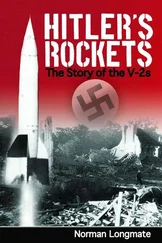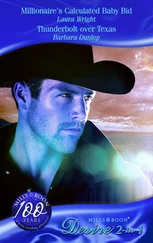Mike Mullane - Riding Rockets
Здесь есть возможность читать онлайн «Mike Mullane - Riding Rockets» весь текст электронной книги совершенно бесплатно (целиком полную версию без сокращений). В некоторых случаях можно слушать аудио, скачать через торрент в формате fb2 и присутствует краткое содержание. Жанр: Старинная литература, на английском языке. Описание произведения, (предисловие) а так же отзывы посетителей доступны на портале библиотеки ЛибКат.
- Название:Riding Rockets
- Автор:
- Жанр:
- Год:неизвестен
- ISBN:нет данных
- Рейтинг книги:3 / 5. Голосов: 2
-
Избранное:Добавить в избранное
- Отзывы:
-
Ваша оценка:
- 60
- 1
- 2
- 3
- 4
- 5
Riding Rockets: краткое содержание, описание и аннотация
Предлагаем к чтению аннотацию, описание, краткое содержание или предисловие (зависит от того, что написал сам автор книги «Riding Rockets»). Если вы не нашли необходимую информацию о книге — напишите в комментариях, мы постараемся отыскать её.
Riding Rockets — читать онлайн бесплатно полную книгу (весь текст) целиком
Ниже представлен текст книги, разбитый по страницам. Система сохранения места последней прочитанной страницы, позволяет с удобством читать онлайн бесплатно книгу «Riding Rockets», без необходимости каждый раз заново искать на чём Вы остановились. Поставьте закладку, и сможете в любой момент перейти на страницу, на которой закончили чтение.
Интервал:
Закладка:
No astronaut was aware of the SRB O-ring problem. In fact, most of us were ignorant of the entire SRB design. There was only a single indication of SRB performance available in the cockpit of a launching shuttle. As the tube pressure fell to less than 50 pounds per square inch, a message flashed on the computer screens giving a warning that burnout and separation were near. Since we had little insight and no control over a burning SRB, we didn’t waste our time in studying its design. We had too many other things into which we did have insight and over which we did have control (the liquid-fueled engines, hydraulics, electrical system, etc.). We devoted our time to learning the design and operation of these systems. We were convinced the SRBs were just big, dumb skyrockets, as safe and reliable as a hobby store model rocket. It was the SSMEs, which periodically blew up in ground tests, that we feared most.
The Thiokol and NASA SRB engineers were buoyed when STS-3’s boosters returned with no O-rings damaged. It was full speed ahead with the shuttle program.
And the program shifted into overdrive on July 4, 1982. It was then that President Ronald Reagan and the First Lady celebrated Independence Day at Edwards AFB by personally welcoming Ken Mattingly and Hank Hartsfield back from space after their successful STS-4 mission. Reagan called attention to the latest orbiter to join the shuttle fleet, Challenger. Fresh from the nearby Rockwell factory, that vehicle was mounted atop its 747 carrier aircraft ready to take off for Florida as soon as the president finished his comments. It was an incredibly intoxicating sight. Columbia sat on the cracked dirt of the lakebed looking every bit the veteran of four spaceflights, with her nose and fuselage streaked with soot from four blazing reentries. Challenger sparkled in her virgin newness. It was the perfect backdrop as the president continued his speech and declared the space shuttle program “operational.”
That label had never really been defined, but it was easy to sense how most of NASA and all of the public interpreted it. Operational meant the shuttle was nothing more than a very high-flying airliner. I doubt there was a single military aviator astronaut who believed that. Fighter jets of far less complexity than the shuttle routinely suffered malfunctions resulting in crashes. We were certain one awaited the shuttle, too, and when it happened, it would mean death for her crew. While the operational label was nebulous, it did contain one certainty—all future shuttle missions would be flown in vehicles with no in-flight escape system. There were no ejection seats in Challenger ’s cockpit and the two in Columbia would soon be removed. That had been the plan from the very beginning. President Reagan’s “operational” declaration was merely photo-op tensile. But contained in it was a shuttle design feature that would condemn some of us to death.
With flight crews named to all the planned missions through 1983, I knew I would not be getting a flight assignment for many months, perhaps even a year or more. But at least my purgatory of Spacelab support had ended. I was now assigned to shuttle software checkout in the Shuttle Avionics Integration Laboratory (SAIL). My frequent partner in that facility was the now very pregnant Rhea Seddon. She and Hoot Gibson had married in 1981 and their first child was due in July. In the SAIL cockpit I would watch Rhea’s nine-month distended belly crowd the control stick as she flew simulations to perfect landings. It was a sight certain to have sent some of the old Mercury astronauts fumbling for their nitro pills. Rhea would ultimately give birth to a son, one of the rare boys born to astronauts. We had long noticed a propensity for astronauts to sire daughters and wondered if the G-forces of our jet-jockey training were pushing male sperm to the end of the line. As Hoot and Rhea were being congratulated at a Monday meeting, one pilot shouted, “This proves Hoot isn’t an astronaut.” I answered, “No. It proves Hoot isn’t the father.” Rhea had a good laugh at that.
I enjoyed Rhea immensely. Like Judy, she was a smart and capable beauty with a limitless tolerance for us AD males. She frequently parried our sexist BS with biting humor. I once saw Hoot, our AD King, skewered with it. One of the men chosen to sit on an upcoming astronaut interview board had ducked his head into our office and asked for inputs on the selection criteria for the new class of astronaut candidates. Hoot gave Rhea a body-appraising scan and answered, “Yeah, how about selecting some women with big breasts and small asses instead of the other way around.” Rhea smiled wickedly at her husband and replied, “Robert, some night while you’re asleep, I’m going to amputate your penis [she was a surgeon] and graft it to your forehead, and when you come to work people are going to think it’s a zit.” Hoot had married perhaps the only woman on the planet who was his equal. When they were together it was a laugh a minute. I loved them both.
By 1982, like the other AD men, I had learned my boundaries around the six females. Rhea’s and Judy’s were the widest. Sally’s were the tightest. Though I repeatedly warned myself to watch my mouth around Sally, I would have relapses, as when I once observed, “The female cosmonauts are sure ugly.” Sally snapped, “Have you ever thought they might be good at their job?!”
Alcohol always held the potential to wreck my resolve. One evening, as Donna and I walked from a local restaurant (after a dinner that included more than a few beers), a friend stopped Donna and they fell into conversation. As I dallied, I noted Sally and Steve Hawley at another table dining with an attractive woman I didn’t recognize. At the time, Steve was dating Sally so there was nothing surprising about seeing them together. With my wife engaged I walked over and said, “Hey, Stevie, are you getting cookie recipes from these girls?” Sally glared at me like I was something growing in her bathroom grout. Hawley cringed as if he had taken a bullet to the gut and shot Sally a glance that said, “I don’t know this guy.” There was an awkward silence during which the unidentified woman examined me as if I were whale shit, the lowest thing on the planet. Finally, I bid a good-bye and escaped back to my wife, my hands discreetly checking the zipper of my fly as I walked. The threesome’s rude reaction made me wonder if I had forgotten to zip up after my last visit to the urinal. Nope, everything was secure.
As I returned, Donna’s friend gushed, “You know her?!”
Of course, I assumed she was referring to Sally.
“Sure, that’s Sally Ride.”
“No, not her. The other woman.”
“No. I wasn’t introduced.” I was still puzzled by that table’s hostility toward me. Was it something I said?
“That’s Jane Pauley.”
I shrugged. The name was a mystery to me. “Who’s Jane Pauley?”
Donna’s friend nearly had a seizure. “Who’s Jane Pauley!? You don’t know? She’s the NBC Today show newswoman.”
I honestly didn’t know. I didn’t watch much TV. I certainly didn’t watch those chatty morning shows. If she wasn’t in Aviation Week & Space Technology magazine, I wouldn’t know her.
With this new bit of knowledge, it slowly dawned on me why I had been stonewalled at Sally’s table. No doubt Ms. Pauley was talking to her about her recent flight selection. I could just imagine how my cookie recipe comment must have played with those two pioneering females. I made Hugh Hefner look like a beacon of enlightenment. I guess it’s no surprise I was never invited to the Today show.
On October 5, 1982, three more TFNGs were named to a flight, STS-10 (later to be designated STS-41B). *I wasn’t among them.
Читать дальшеИнтервал:
Закладка:
Похожие книги на «Riding Rockets»
Представляем Вашему вниманию похожие книги на «Riding Rockets» списком для выбора. Мы отобрали схожую по названию и смыслу литературу в надежде предоставить читателям больше вариантов отыскать новые, интересные, ещё непрочитанные произведения.
Обсуждение, отзывы о книге «Riding Rockets» и просто собственные мнения читателей. Оставьте ваши комментарии, напишите, что Вы думаете о произведении, его смысле или главных героях. Укажите что конкретно понравилось, а что нет, и почему Вы так считаете.












